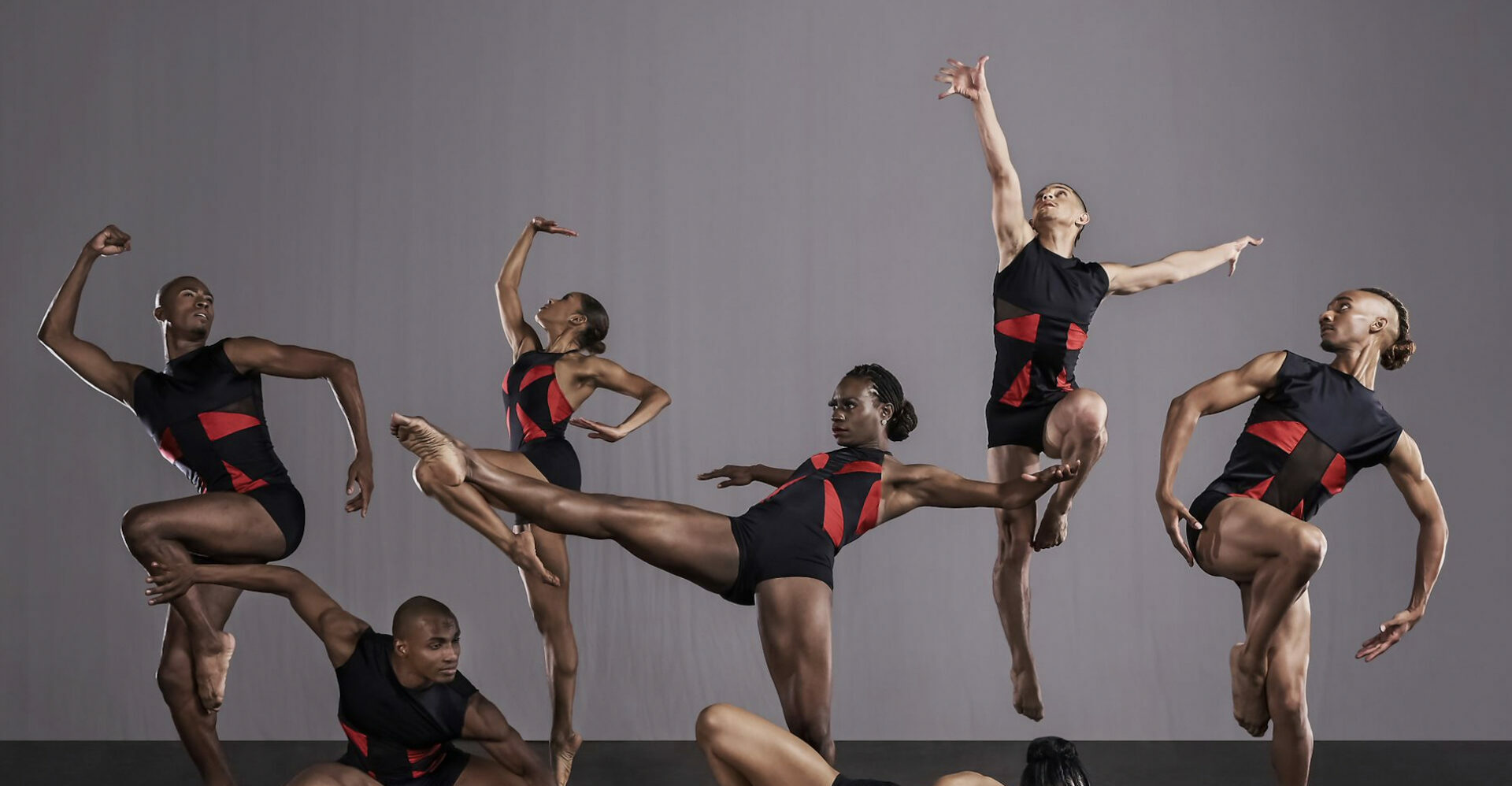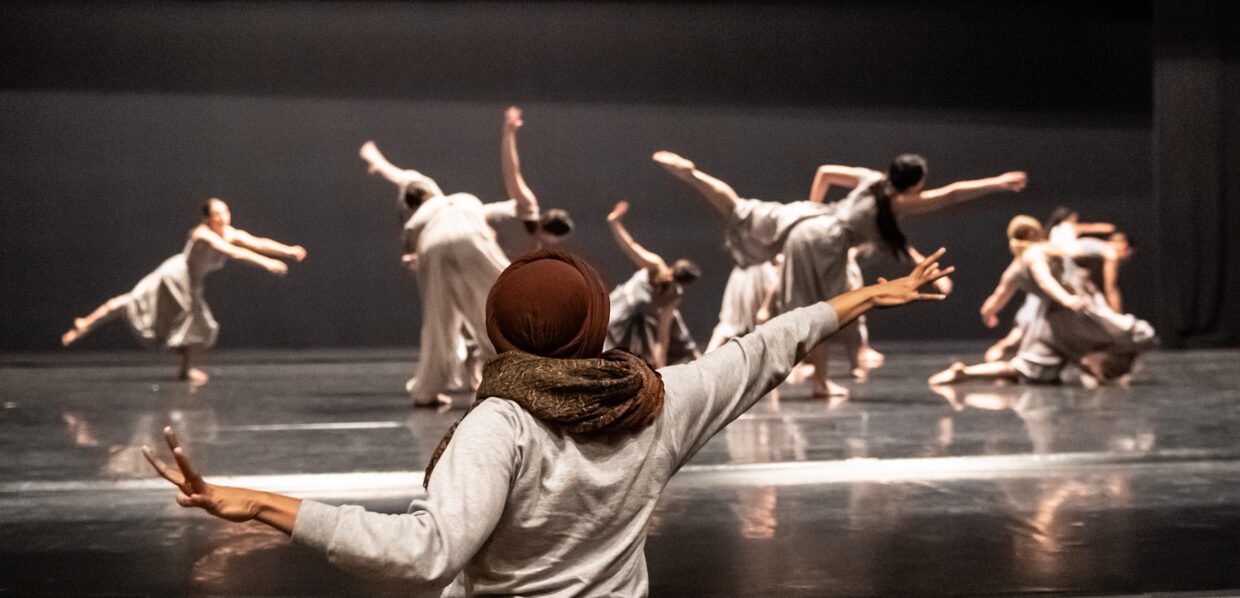By Blair Black
Blair Black is a 2023 Archiving and Preservation Fellow with JazzAntiqua. Read more about the Fellowships here. This is the second part of Blair’s blog; read the first part here and the third part here.
History Comes Alive in the Archives
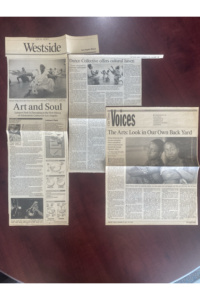
Newspaper clippings about The Dance Collective
The wonderful thing about processing collections is the unique feeling of experiencing the passage of time through the eyes of the collector. In the case of Pat Taylor and the JazzAntiqua collection, I get a feel for the timeliness of JazzAntiqua’s establishment. After spending nearly a decade dancing and teaching all around Europe, Taylor wanted to open her own dance school in the Lemiert Park neighborhood of Los Angeles, and thus the now defunct Dance Collective, JazzAntiqua’s precursor, was established in 1993. Lemeirt Park’s emergence as the “New Mecca of Afrocentric Culture in Los Angeles” (Renwick & Aubry 1993) came on the heels of the 1992 L.A. Rebellion. According to the first-hand documentation Pat and her mother, Jeanine Taylor, collected, Lemiert Park in the Crenshaw District was emerging as the epicenter of Black culture in the 1990s. Alongside films and television shows like Boyz in the Hood, Menace II Society, and Moesha, and music and arts venues like Fifth Street’s Dick, Babe and Ricky’s, Museum in Black, and World Stage, The Dance Collective further situated Lemeirt Park Village as L.A.’s Africa Town. With programming such as free contemporary dance workshops for teens and performances that highlighted underdocumented histories of communities of color, Pat Taylor deepened JazzAntiqua and The Dance Collective’s connection to Leimert Park Village, the surrounding neighborhoods, and greater Los Angeles.
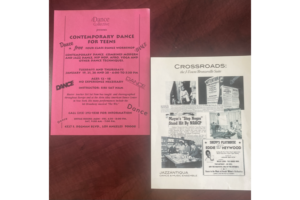
Promotion flyers for Dance Collective programs
With the creative nexus of Leimert Park Village all being within a two-block radius, it is no wonder Pat Taylor understood and prioritized the relationships between Afrodiasporic expressive cultures. Her first production, Midtown Sunset, beautifully intertwined the realms of dance and Jazz music, creating an artistic synergy that transcended traditional boundaries. This innovative production showcased the transformative power of collaboration, offering audiences a sensory experience that immersed them in the fluidity of movement and the evocative melodies of jazz. The performance was largely inspired by the work of African American collagist Romare Bearden who depicted the African-American experience through glimpses into their everyday lives, bridging the personal and the communal, offering a space for dialogue and introspection, and capturing both the struggles and the resilience of the community. Through playing on and with the music and visuals, Pat set the stage for a contemporary Jazz dance vernacular which Los Angeles had seldom seen.
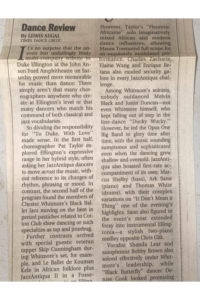
Clipping of Dance Review for JazzAntiqua’s first production Midtown Sunset
Writing the above about some of the interesting things in the archive has led me to this question: How can the archive, through my time in this Fellowship, facilitate learning about these historical perspectives and their importance for upcoming students, dancers, and researchers? This is especially poignant given that The Dance Collective shuttered its doors in 2005 due to the rising rent costs that pushed many Black owned cultural establishments that established Leimert Park as L.A.’s Africa Town. Given my limited time and JazzAntiqua’s limited archival resources, we decided on implementing internship programs that will utilize company dancers to follow the processing procedures established during my time here this summer. Additionally, we have discussed how to take advantage of longtime company members Laura Ann Smyth and Bernard Brown’s professorial/lecture appointments at universities around Los Angeles. For instance, I recommended implementing a “Notes from the Archive” assignment where their students are tasked with physically interacting with collections and writing a 250-word reflection to be published on the blog section of JazzAntiqua’s existing website. This assignment aids the archive in two ways: 1) generating press about the collections, and 2) creating a documented log of user access. In accomplishing these two small things, archives, such as JazzAntiqua’s, can work toward meeting the criteria of collection processing grants such as National Endowment for the Humanities. As I continue to catalog the JazzAntiqua collections I am excited to continue brainstorming and presenting ideas to showcase the rich histories and perspectives of Jazz music and dance, and Black Los Angeles.
Cited
Renrick, L. & E. Aubry. 1993. “Art and Soul: Lemiert Park is Emerging As the New Mecca of Afrocentric Culture Los Angeles” Los Angeles Times. 1 December.
Header photo: JazzAntiqua Dance & Music Ensemble performing “Freedom! Jazz! Dance!” 25th Anniversary Concert (2018) at the Nate Holden Performing Arts Center. Pictured: Paul Livingstone (bass), Albertossy Espinoza, Sarah Platte, Autumn Randolph, Justin Edmonson. Photographer: George Simian. Courtesy of JazzAntiqua.
All other photos courtesy of the author.
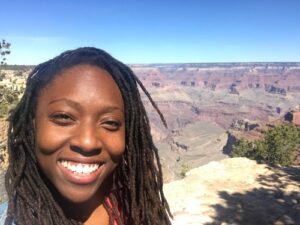 A Los Angeles native, Blair Black (she/her) is a doctoral candidate in UCLA’s Ethnomusicology department. Her work focuses on the representational politics of underrepresented communities within electronic dance music and club cultures. Her dissertation studies the aesthetic developments and discursive strategies people of color and queer communities employ in navigating (in)formal EDM industries. A recipient of the University of California’s Dissertation Year & Eugene V. Cota-Robles Fellowships, Blair has worked with projects such as the Center for the Study of Women’s Chemical Entanglements Oral History Project, the Center for Oral History Research’s Black LGBTQ in Los Angeles Oral History Project & UCLA Herb Alpert School of Music Library’s forthcoming My Life in the Sunshine: Sampling the Soundscape of Black Los Angeles Exhibit. An aspiring archivist, she’s worked closely with Southern California repositories (UCLA’s Ethnomusicology Archive & The ONE Archives at USC) and hopes to continue processing collections of underdocumented communities with JazzAntiqua. Photo courtesy of Blair Black.
A Los Angeles native, Blair Black (she/her) is a doctoral candidate in UCLA’s Ethnomusicology department. Her work focuses on the representational politics of underrepresented communities within electronic dance music and club cultures. Her dissertation studies the aesthetic developments and discursive strategies people of color and queer communities employ in navigating (in)formal EDM industries. A recipient of the University of California’s Dissertation Year & Eugene V. Cota-Robles Fellowships, Blair has worked with projects such as the Center for the Study of Women’s Chemical Entanglements Oral History Project, the Center for Oral History Research’s Black LGBTQ in Los Angeles Oral History Project & UCLA Herb Alpert School of Music Library’s forthcoming My Life in the Sunshine: Sampling the Soundscape of Black Los Angeles Exhibit. An aspiring archivist, she’s worked closely with Southern California repositories (UCLA’s Ethnomusicology Archive & The ONE Archives at USC) and hopes to continue processing collections of underdocumented communities with JazzAntiqua. Photo courtesy of Blair Black.
____
We accept submissions on topics relevant to the field: advocacy, artistic issues, arts policy, community building, development, employment, engagement, touring, and other topics that deal with the business of dance. We cannot publish criticism, single-company season announcements, and single-company or single artist profiles. Additionally, we welcome feedback on articles. If you have a topic that you would like to see addressed or feedback, please contact communications@danceusa.org.
Disclaimer: Opinions expressed in guest posts do not necessarily represent the viewpoints of Dance/USA.




